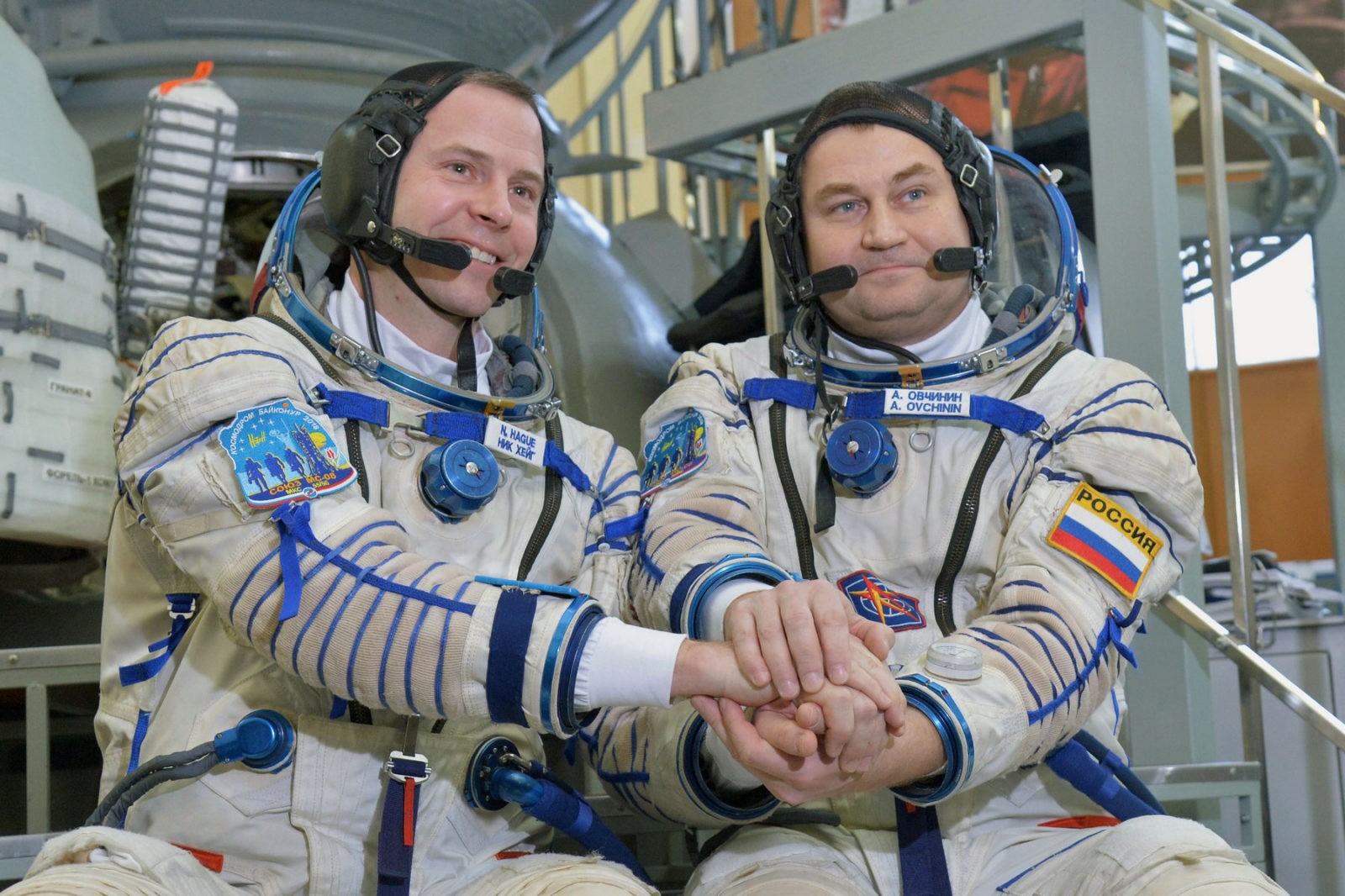In the autumn of 2017, the first reports appeared that Russia could take part in the NASA project to create a manned space station in the Moon’s orbit. Signed at that time, the memorandum of intent gave Moscow hope that after the completion of the International Space Station project in the 2020s, it would not be pushed to the margins of the global space industry.
In May 2018, NASA confirmed that it was negotiating with its current partners, including Russia, on the establishment of the Lunar Orbital Platform-Gateway. This made the Russian party even more optimistic, up to the point that the press began to discuss the details of Russia’s potential contribution to the project, as well as the number of Russian cosmonauts and their dates of flying to the Moon in American spaceships.
At first glance, such enthusiasm in Moscow goes against the flow of its current course of confrontation with the West. However, in practice, Russia’s cooperation with Western countries in space fits well into such a policy. The goal of its present confrontation is clear: To win special conditions from the United States and Europe to guarantee that the Kremlin can preserve its own political and economic power within Russia, while maintaining a need for other countries to have to consult it on decisions of an international nature.
Here, any strategic cooperation with Moscow prevents it from being isolated and turned into a passive bystander. Such cooperation, just as with the gas sector, constantly requires foreign partners to take the Kremlin’s agenda into account and reckon with it. The fatal flaw? The lack of trust in the Russian government on earthly matters, the condition of Russian political institutions, and the inefficiency of Russia’s space industry make further reduction of space cooperation with the West inevitable.
The long gone ‘golden age’
In the early 1990s, when Russia and the United States became partners in space, the general attention was focused on the technical and financial aspects. Russia had the experience of long manned flights at Salyut and Mir stations and a developed missile programme, but it grappled with serious economic difficulties and struggled to adapt its space activity to new conditions. The USA sought to borrow Russian experience and was ready to support the Russian industry by placing orders. Together with the United States, European countries also expanded their partnership with Russia.
What turned out to be less obvious was that the partnership was based on both parties’ political interests. For Moscow, joint space projects with Americans and Europeans supported its high international status. Such status was much higher than Russia could otherwise count on, based on its current socio-economic situation and the political situation at home. And unlike the nuclear weaponry, which supported its status in political terms, cooperation in outer space gave Russia the much-desired prestige, a reputation of a creative player and a resource for modernising the country.
As a precondition for broad space cooperation with Russia, the United States required that it participates in the non-proliferation of missile technologies. Also, a long-standing task was being solved in parallel: to avoid leaving the weakened post-Soviet Russia on the side-lines to reduce the threat of revanchism on its part. The privileged space partnership with Washington was intended to make the Russian political elites confident in their reformist endeavours. In addition, the integration of Russians into the U.S. space programme, the United States strengthened its leadership in space and, consequently, also in international affairs.
Subsequent years showed that too much was expected of that partnership. It was not very conducive to Russia’s modernisation and failed to prevent Kremlin’s revanchism. As a result, all the current joint projects between Roskosmos (which managed to evolve from the federal space agency into a state-run corporation), NASA and ESA started before 2014.
Moreover, the cooperation between Russian and American space companies began to shrink in the mid-2000s, when the Americans abandoned their commercial projects, i.e. Sea Launch and International Launch Service. The only components that remained were the deliveries of the RD-180 and RD-181 rocket engines to the USA by Russia’s NPO Energomash (part of Roskosmos), aimed for the Atlas V and Antares rocket vehicles. Cooperation between Russian and European companies focused on the production of satellites as Russia seriously lagged behind in this area, and it still does. Since 2014, this cooperation has been virtually discontinued.
Over the past five years, Russia and Western countries have started no new joint space projects, and the question on the agenda was what to do after the International Space Station was wound up. Of course, after the Columbia shuttle crash in 2003 and until 2005, and after the closure of the shuttle programme in 2011, American astronauts have flown to the ISS on Russian Soyuz spaceships. These flights take place under a contract between NASA and Roskosmos, i.e. they are commercial rather than political. While Americans need Russian spaceships, Roskosmos also needs American money. Russia needs Americans to fly to the ISS without interruptions, otherwise there will simply be no station. However, this interdependence has not brought any political rapprochement. Moreover, the USA is currently developing three manned spacecraft (Dragon, CST-100, and Orion) for flights to the Earth orbit and beyond. The first spaceship should be launched in 2019, which means that Americans will no longer need Russian services in the near future.
Not surprisingly, the possible participation in the NASA lunar programme is of great importance for the Kremlin. Otherwise, it will inevitably face the prospect of losing the status of an important country and turning into a global margin, which will aggravate the Russian elites’ nightmare about the distribution of power and wealth within the country.
Condition of the industry
Formally, the Russian space industry is part of the military industry. Much like the vast majority of defence companies in Russia, it struggles with its own inefficiencies. Chronic delays in projects speak louder than words: after all, what is the point of taking 23 years to develop Angara carrier rockets, or almost 10 years to delay the delivery of new modules for the Russian ISS segment, or postponing the launches of scientific devices year after year?
The financial indices of RSC Energia, which produced modules for Mir and the Russian segment of the ISS and which produces manned Soyuz spacecraft, also speak volumes. In 2017, the company’s total revenue reached almost 42.4bn roubles (about $727m), while its liabilities with a maturity in 2018 stand at 58.8bn roubles (about $1bn at the current exchange rate). In previous years, the situation was equally deplorable. The company has been saved from bankruptcy by the government, which owns it through Roskosmos and, in fact, endlessly lends money to it via state-owned banks. Even the economic standing of NPO Energomash, which has been supplying missile engines to the United States for many years, is very far from prosperous.
How can the Russian space industry participate fully in building a station in the lunar orbit is a big question under the current circumstances. Moreover, Russia’s space programme until 2025 does not include any such project and, moreover, it is scheduled for a 10% reduction due to a shortage of funds in the Russian budget. By and large, Moscow’s agenda for today is to remain a formal participant in the Lunar Orbital Platform-Gateway project at least in some way and be able to show its flag there.
The prospect of a lunar station
The concept of a manned space station in the Moon’s orbit, currently being developed by NASA, presupposes the presence of only two main modules: an energy one and a residential one. The station will also need auxiliary systems such as docking and sluice compartments, platforms for placing external scientific equipment, etc. Russia is currently being viewed as a potential provider of a sluice module enabling cosmonauts’ escape into outer space.
However, even before any clear agreements and contracts are made, Russia is facing an additional difficulty: it will have to make the module (if at all) according to American standards. For readers’ reference, the Russian modules on the ISS are made according to Russian standards, while the American ones follow American standards.
At the same time, Moscow might have an unexpected advantage: RSC Energia has three modules for the ISS, at varying degrees of readiness. They were scheduled for launch back in the late 2000s, which never happened. The launch of the first of those modules, called Nauka, to the ISS is planned for the next year. The remaining launches are uncertain: if the station terminates its operations in 2024 or a little later, then it makes no sense to launch the modules. One of them called Prichal, can be hypothetically modified and made into a sluice module for the lunar station. Most likely, Russia will try to offer this option to NASA as it is most advantageous for itself.
However, even if Russia succeeds in striking such a deal with the US, it will not be able to convert it into a long-term success. Within the lunar initiative, Americans will rely on private companies while implementing a major scientific programme. Meanwhile, today’s Russia does not know how to keep its astronauts busy at the ISS, and science is not really much of a priority for the Russian authorities. Russian astronauts will simply have nothing to do at the lunar station. Moreover, while the Americans and Europeans are planning and implementing scientific projects in space, Russia’s main space project is the Vostochny space centre, judging by the costs and attention it gets from the authorities. Russia began to build it in 1997 (under the name of Svobodny until 2007) in order to reduce its dependence on Baikonur in case of problems with Kazakhstan.
Roskosmos and American private companies represent very different paradigms of operation and, as such, are hardly compatible. While Roskosmos is able to cooperate with NASA, a government agency, it does not know how to work with Elon Musk, Robert Bigelow, Jeff Bezos and other entrepreneurs. It is enough to look at how Russia builds relations with its entrepreneurs in space industry and how it reacts to other countries offering room for private initiative in outer space. Thus, despite the Kremlin’s desire, if it wants to make the US-Russian space cooperation a reality, it will need to begin with profound changes in its political and economic structures.










